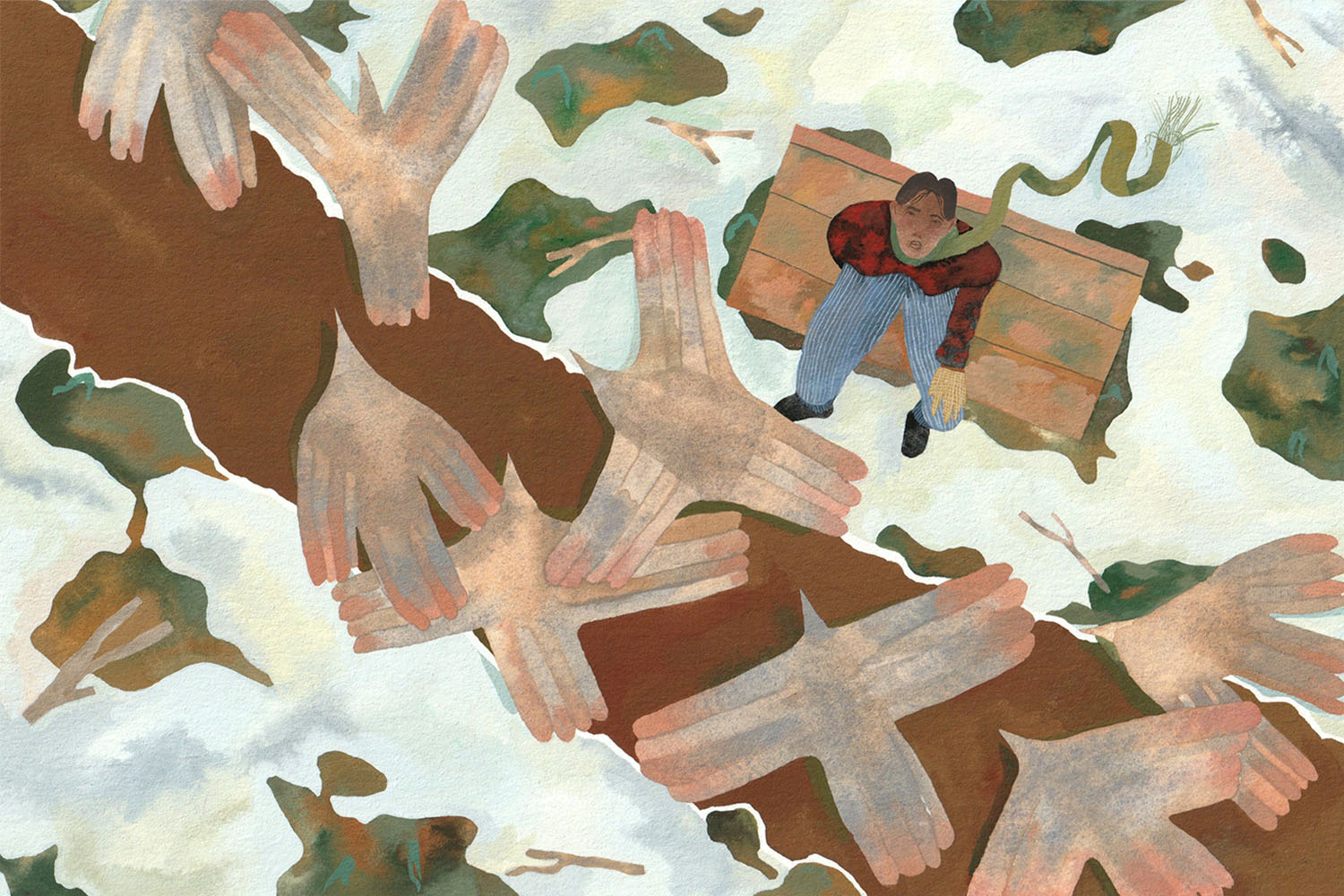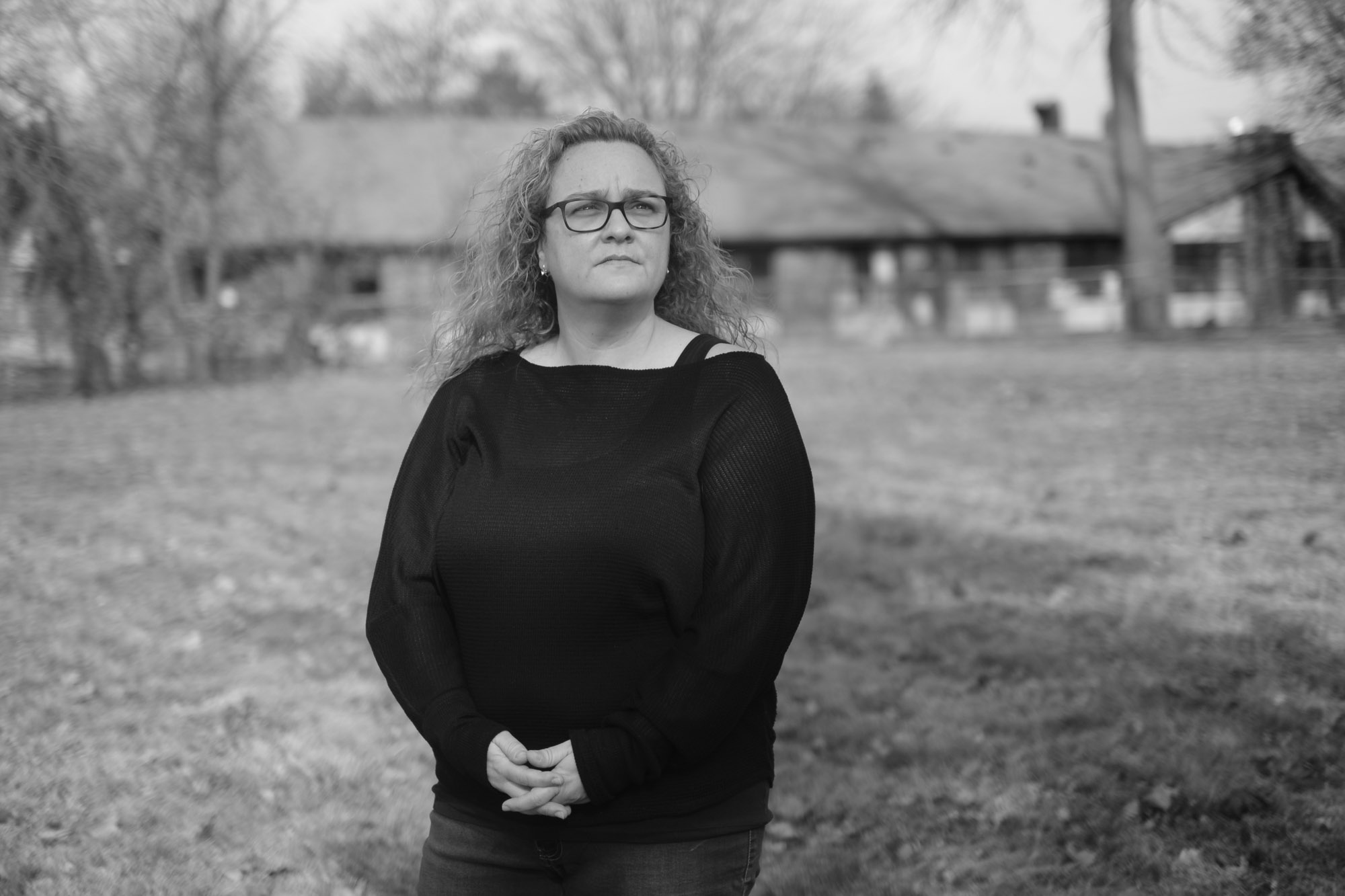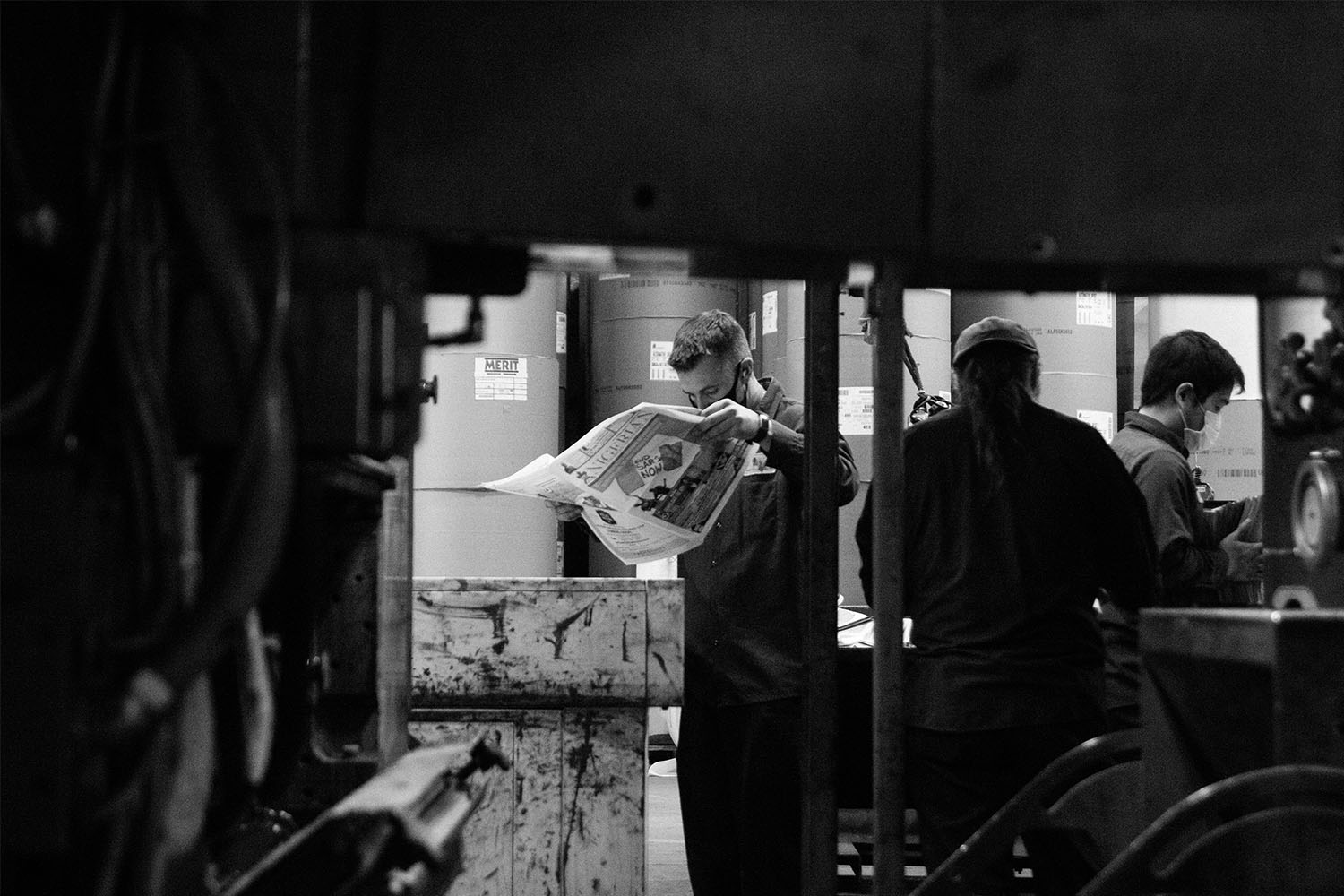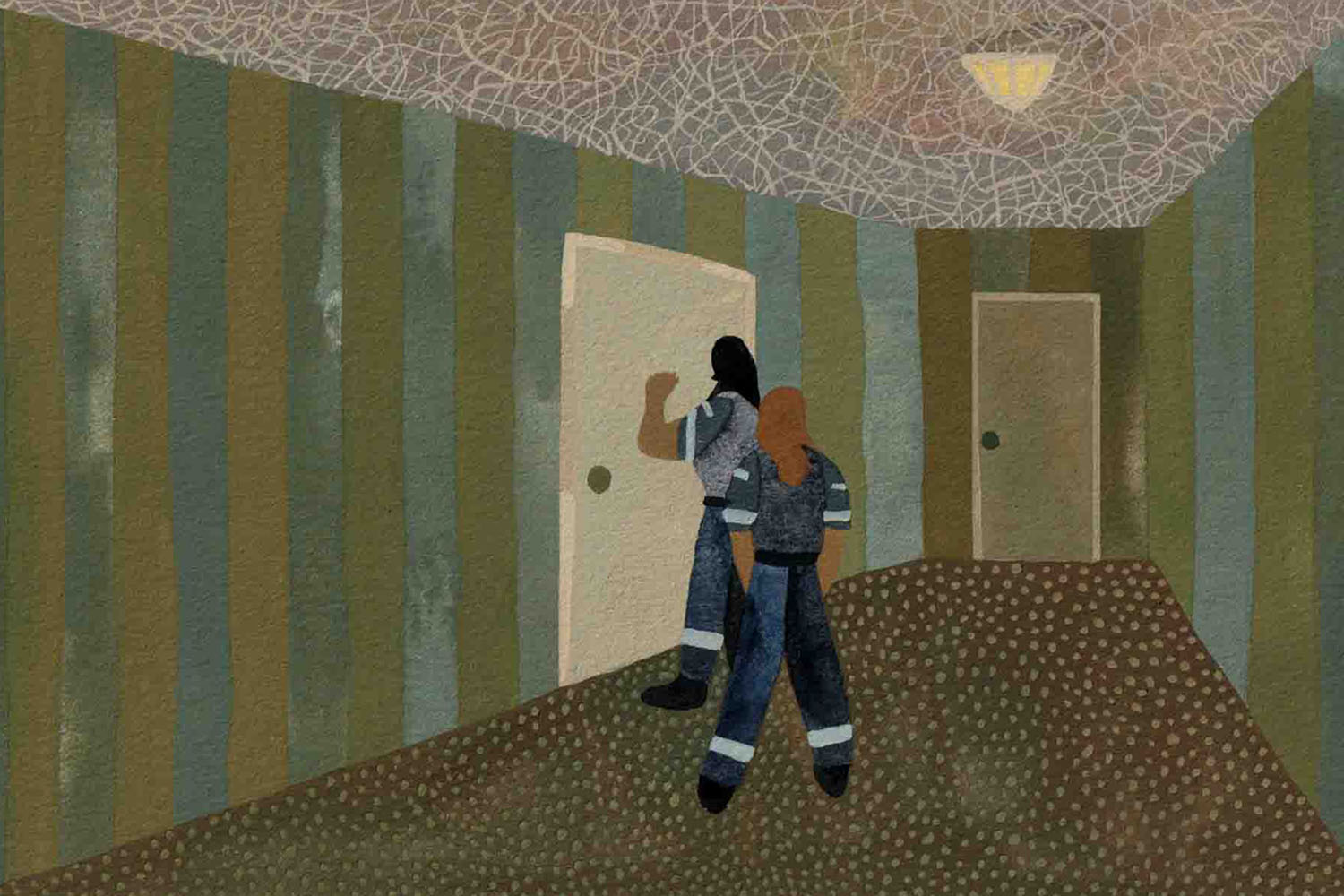

Luis Gabriel Flores Flores has been coming to Canada under the Seasonal Agricultural Workers Program for the past six years.
When the 36-year-old landed in Canada in April, from his native Mexico, he went straight to his hotel for his requisite two-week quarantine. Even as the COVID-19 pandemic knocked the world sideways, Flores had to keep working: His wife, two kids, and elderly mother depended on the income he made in Canada.
With his quarantine up, Flores arrived at Scotlynn Sweetpac Growers—one of the largest farming operations in Ontario, per the company itself. When he pulled up to the farm, about two hours southwest of Toronto, any promises of precautions and safety measures to guard against the fast-moving virus evaporated. “The houses were in poor condition, communal bathrooms shared by many workers [were] in unsanitary condition,” he wrote in a letter. “There was very little space in the rooms and in the houses; it was impossible to keep distance.”
On the farm and in the processing plants, Flores was worked to the bone. He toiled side-by-side with workers from his bunkhouse, but also with other workers staying on other parts of the farm. “The employer never gave us protective gear—no gloves, no masks, no antibacterial gel.”
They were “the perfect conditions for the COVID-19 outbreak that made us ill,” Flores wrote.
As those on the farm began falling ill, mostly migrant workers like Flores, farm management were indifferent. “They ignored us,” Flores recalled. The farm managers offered Tylenol. When one worker became dangerously sick, it was his colleagues—not the farm ownership—who called an ambulance.
In total, 199 workers tested positive for COVID-19, including Flores. Five wound up in the hospital. On June 20, news came that Flores’ bunkmate, Juan López Chaparro, had died.
As the workers mourned the death, Flores says management threatened to withhold their pay if they didn’t return to work. Robert Biddle Jr., the owner of the farm, accused Flores of speaking to the media about the conditions on the farm. And he was right: Flores had blown the whistle to the Globe and Mail and Toronto Star. He would be going back to Mexico, Biddle decided. “I did not want to be deported,” Flores recalls.
“What happened to me is what happens to migrant workers when they try to defend their rights.”
When the virus first struck in March, a wave of anxiety rippled through the city. There were runs on the grocery stores, with TV crews filming shopping carts piled high with canned goods. In Ottawa, politicians implored calm: Hell or high water, they said, the supply chain that kept Canadians fed would bend but not break. Canadians may not see the invisible hand putting food on supermarket shelves, but Prime Minister Justin Trudeau promised the country that it was hard at work.
And he was right. As the first and second waves of the virus have ebbed and flowed, Torontonians have queued outside their local grocery store, walked to the sanitizing station to pump a dollop of the harsh alcohol onto their hands, and followed the large arrows stuck to the floors, performing a carefully orchestrated social distancing dance. Even amid a society-altering pandemic that has changed virtually everything about our day-to-day lives, the produce has looked just as green, the loafs of bread are soft and squishy to the touch, and beef has the same healthy red hue.
But things haven’t been normal. Tumult, sickness, and uncertainty have plagued our food supply chains. From the farm to the processing plant to the warehouse, from delivery workers to kitchen staff, outbreaks have pushed the links in those chains to the breaking point. And those outbreaks have rippled outwards, to the rural towns and suburban communities nearby.
Those initial outbreaks have largely been kept out of the public eye—often not much more than a headline or a short item on the evening news. Some health authorities have even refused to identify the facilities where the outbreaks began.
Garnering even less attention are the more than 200,000 temporary foreign workers who make Canada’s meat and agricultural systems work, putting their lives on the line to keep food on Canadians’ tables without any of the benefits or protections afforded to their landed colleagues. One-in-five farm workers in Canada are migrant workers; a third of all farm labour in Ontario is imported. Even though the mortality rate is vanishingly low for younger and middle-aged people, at least three migrant farm workers have died from the virus, while 1,600 have fallen ill.
Many have called COVID-19 a magnifying glass, highlighting disparities and inequalities in our society and economy. No group understands that better than migrant workers.
Before the pandemic, calls were mounting for real action to end the exploitation of those workers, extending workplace protections and a path to citizenship for those who make our food systems work.
Ottawa demurred.
During the pandemic, watchdog groups demanded Ottawa step in to provide significant support and oversight to ensure employers were taking serious action to protect both migrant workers and the communities surrounding these farms and facilities.
Ottawa tinkered.
Coming out of this crisis, advocates—including the agri-food industry itself—are demanding change, so this never happens again.
Will Ottawa listen now?
In 2014, the federal government announced their plans for a long-awaited overhaul of the temporary foreign worker program.
The Conservative government released a 40-page document overviewing the problems and need for reform. Almost the entirety of the document was about clamping down on when, and how, migrant workers could be employed in Canada. About a half page was devoted to “protecting temporary foreign workers.”
The document contended that “temporary foreign workers have the same rights and protections as Canadian workers under applicable federal/provincial/territorial employment standards and occupational health and safety laws.” Any problems with shady recruiting, or lax workplace health and safety standards, fell to the provinces, the document concluded. Ottawa would do its part by drawing up an information package, to be handed to migrant workers when they enter Canada. The plan was not without some teeth: one-in-four employers would be visited by federal inspectors per year, they promised.
That anemic plan was clearly insufficient for Trudeau’s Liberal Party, then in opposition. They even introduced a motion calling for a plan that requires regular audits of workplaces employing temporary foreign workers, the regular publishing of investigations into abuses of the system, and a complaint tracking system. In office, they set about beefing up the compliance regime.
But three years later, after the Trudeau government took charge, an investigation from the Auditor General found the government was making scant use of those powers. Employment and Social Development Canada did increase its oversight, the audit found, but the reviews were almost always random, not targeted to the most high-risk and abuse-ridden sectors or employers. What’s more, the department “conducted few on-site inspections and face-to-face interviews with employers or temporary foreign workers.” When it did on-site inspections, it gave employers ample heads-up before arriving. Even when the inspection found shortcomings, “the recommendation could take months to go through all the levels of approval.”
According to a follow-up audit, completed in June of this year, things improved. But it also found that more than 40 percent of inspections found wrongdoing by employers.
And there have been other improvements. Temporary foreign workers were once chained to the employer who brought them into the country. Since 2019, the workers have been afforded the opportunity to apply for “open” work permits. Workers “being abused or at risk of being abused” per the government of Canada can fill out a form and hope Ottawa permits them to change employers without being sent home. But, as a parliamentary committee heard, that was hardly a cure-all: “Individuals most vulnerable to abuse are those in low-skilled positions who have language barriers, work in isolation, and are indebted to recruiters.” This government has also expanded the role of the Canadian Food Inspection Agency, who are often on-site at farms and food processing sites—although their mandate is more about food safety than protections for workers.
Five years into the Liberal mandate, incremental improvements had come, but wholesale reform seemed miles off.
Then the pandemic hit.
In early April, with Canada’s borders closed, Employment and Social Development Canada put out clear guidelines for migrant workers, especially those slated to enter the country for seasonal agricultural work. It required that temporary foreign workers quarantine upon entering the country, like other travellers; it suggested that they could not be forced to work during their quarantine, or while sick; and their accommodations, if offered by the employer, should allow for good social distancing.
But there was a core flaw, as pointed out by groups that advocate for the rights of migrant workers: They were guidelines. Suggestions, essentially, without clear mechanisms to hold employers to account.
“In-person inspections aren’t happening,” says Syed Hussan, executive director of the Migrant Workers Alliance for Change.
When complaints do happen, Hussan says, it’s not hard to pull the wool over the government’s eyes. At one farm in southern Ontario, some of the migrant workers made a complaint about working conditions during the pandemic, and an inspector was dispatched. The management, Hussan says, identified 75 workers as being the instigators: “They locked them up in these homes, these bunk houses, and they parked golf carts at the door with supervisors inside, so that when the inspectors came, they weren’t interviewed. And all 75 of them were told they will not be able to come back in the future.”
When Migrant Workers for Change opened up a confidential tip line, in English and Spanish, they received some 180 calls, between just March and May. (The group themselves note that tip lines are imperfect venues for complaints, as many workers don’t have access to phones or the internet.) The workers who called claimed to represent, in aggregate, more than 1,000 workers on farms across the country.
The group heard that the guidelines adopted by the federal government often meant nothing on the ground. According to the guidelines, workers who went through the mandatory 14-day quarantine were to be paid for that time. Workers who called Migrant Workers for Change “were either not paid for this period at all, had their quarantine incomes clawed back, or were paid less than the required 30 hours per week.”
Others reported inadequate food or a total inability to maintain the requisite two metres from their coworkers. Many workers, who may not speak English or French, were totally unable to access health advice or guidance, and neither the federal government nor their employer rectified that.
The imposed lockdowns meant that workers were unable to leave their employer-provided accommodations to buy additional food, send money back to their families, or make phone calls. Some employers, these workers reported, went drastically to the other extreme, hiring security guards to enforce the quarantine orders.
In the summer, Ottawa announced just shy of $60 million to, as the government phrased it, “boost protections for temporary foreign workers and address COVID-19 outbreaks on farms.” The package included $6 million to fund outreach to those workers, $16 million for inspections, and $35 million to fund upgrades on the farms.
Migrant workers groups slammed the money as woefully insufficient. By the time the money was announced, there were at least 17 outbreaks on farms alone, with some 600 workers testing positive. Inspections, advocates pointed out, often come too late and were easy to game. The money to fund upgrades was announced in July, but applications for the money did not open until late October, as a second wave began raging. And outreach to these workers was already happening, and the stories being reported back were devastating.
When workers at Greenhill Produce first started to feel ill, they thought it was just the greenhouse effect. Outside on the farm, about two-and-a-half hours south of Toronto on the way to Detroit, it was still freezing cold amid an early spring cold snap. Inside, with the produce, the workers were sweltering: flush faces, runny noses, fatigue. Even after the first six workers reported symptoms, nobody was keen to ask for time off. The workers hadn’t been given sick days in years prior, according to a Migrant Workers Alliance for Change report, and the owners hadn’t signalled that anything would be different this year, even as a startling new virus was spreading through Asia and Europe.
When, finally, one worker was too sick to get out of bed, the company sent them to be tested for the novel coronavirus. It came back positive. It was no great shock that others tested positive, too, given they shared close-quarters in their company-supplied lodgings, sometimes six to a room.
More than 100 workers caught the virus before the outbreak was brought under control in June.
As this pandemic worsened, migrant rights advocates sent letters to the government. Flores sent letters, too. They all went unanswered.
“One of the reasons Canadians were so good about staying home is because when they did go to the grocery store there weren’t empty shelves”
Migrant labourers who work fields and greenhouses are at-risk, largely, due to the cramped accommodations provided by many of their employers. Some workers were bunked six to a room, even as they were showing symptoms.
Meat processing plants posed acute risks for the inverse reason: Employees often work shoulder-to-shoulder on assembly lines, carving carcases or packaging processed meat. As of 2017, about three percent of the meat processing industry was made up of temporary foreign workers, while another 10 percent are refugee claimants and new immigrants. Since then, however, Ottawa has created a dedicated program to bring in more temporary foreign workers into the country to work in meat processing facilities.
Over the course of the pandemic, outbreaks emerged in meat processing plants across the country. An Alberta Cargill facility saw a staggering 900 cases (the Globe and Mail has reported that a majority of workers at that plant were new immigrants or migrant workers.) Bui Thi Hiep, a worker at the plant, died as a result of the virus. Another Cargill plant, in Quebec, saw more than 60 cases—a tenth of its workforce.
The meeting minutes of the April 29 meeting of the Middlesex county Economic Resiliency Task Force is a jarring document. A human resources employee from Maple Lodge Farms joined the task force for a presentation on how the company was “attracting, maintaining and keeping their employees safe through COVID-19.”
The minutes report that the representative from Maple Lodge Farms, the largest chicken processor in Canada, confessed she “didn’t have a lot to go on.” But, nevertheless, the company had designed a outreach strategy for their employees, “to keep them safe.” The plan was designed to “to make them feel like they are front line workers and important.” Maple Lodge Farms had also created the “I Feed Canadians” campaign, which included shirts, mugs, and bags. The company was “offering their employees these items. Having contests on staying safe and getting prizes.” The company pledged to communicate with their workers, convey health guidelines, and have a response plan in place for when, or if, any of the employees did test positive for the virus.
What the company wasn’t saying publicly is that there had already been an outbreak. Peel Public Health said the first case had been reported from the plant on April 8. The company sent a letter on April 16 informing employees that the virus had hit the shop floor, according to Global News. By May, the facility had more than two dozen cases.
The company finally admitted to the outbreak on May 6, weeks after it first learned of the positive cases. The next day, the United Food and Commercial Workers union announced one of the infected workers had died.
There have been tough questions of Maple Lodge about why they kept the outbreak secret for a full month.
But not far from their Brampton plant, at a Maple Leaf Foods facility (of no corporate relationship to Maple Lodge Farms), a small outbreak of just three employees had shut down operations completely. Mothballing the facility entirely was a strong, prudent move to keep their employees safe. But it also jeopardized those crucial food supply chains.
Canada couldn’t afford to keep seeing its food processing facilities go offline.
“One of the reasons Canadians were so good about staying home,” says Chris Wattie, President of the Meat Council of Canada, “is because when they did go to the grocery store there weren’t empty shelves.”
The early weeks of the virus put an enormous pressure on Canada’s food supply chain. “Every plant was stretched, but on balance, the system held,” he says.
To their credit, Wattie says, many of the producers got serious about COVID-19 pretty quickly. Rapid communication between producers and the Canadian Food Inspection Agency, plexiglass barriers between workers, staggered shifts to avoid mingling, temperature checks—all had a role to play in preventing outbreaks. Facilities are still reporting cases of workers getting sick, he notes, but the outbreaks are not happening at the plants themselves—a sign that the measures are working.
Part of what makes COVID-19 such a pernicious and dangerous enemy is that it can often be transmitted by people who don’t realize they’re sick. But in workplaces, there is a real danger of employees who show up to work, even though they know they have symptoms. For many workers, the prospect of losing shifts inspires risk.
“What a number of companies did was, they said to their employees: If they had to get tested, or if they had to self-isolate, they wouldn’t lose pay,” Wattie says.
Some companies, but not all.
Facilities organized by the United Food and Commercial Workers union have also had the benefit of collective power in the workplace. The union told The Local that while their workers have been hit hard throughout the pandemic, their ability to negotiate with management has led to real and substantive changes at the worksites to prevent outbreaks and clamp down when cases do pop up. Not all facilities are unionized, however, and some employers use the temporary foreign worker program to avoid union drives.
Wattie is unexpectedly blunt about the long-term solution to that problem.
“We’ve certainly made this clear to the government: Any conversation has to involve the entire concept of temporary workers—not just attracting them—but to giving them a pathway to permanent resident status,” he says.
The union agrees. Per a 2016 report from the union, which represents more than 250,000 workers in Canada: “Without permanent immigration status, vulnerability to abuse will remain a tightly woven element of the [Temporary Foreign Workers Program]—particularly with regard to the lack of proactive enforcement of workplace and other rights.”
Technically, Canada’s foreign worker programs are supposed to discourage bringing in migrant labour. The program is explicitly a “last resort for employers to fill jobs for which qualified Canadians are not available,” per the government.
Yet the benefits of temporary foreign workers are baked right into the system. Employers are free to pay them not just below a prevailing wage, but below the minimum wage by deducting room and board. Labour laws don’t apply to agricultural workers in many parts of the country, and the law is even more lax around temporary foreign workers.
Temporary foreign workers are attractive to employers explicitly because “qualified Canadians” would cost more—both in salary, sick leave, vacation time, and basic workplace health-and-safety precautions that could be brought on by a union drive.
Some of the jobs that rely on migrant labourers are seasonal, as the crops come in. But many of the jobs are not “temporary” in any respect—food processing plants rely on constantly bringing in these migrant workers, and sending them home when their permit expires after six months. Many industries rely on migrant workers who aren’t in Canada legally at all, paying them under-the-table and skirting labour laws altogether. From kitchen staff to those who deliver Uber Eats, undocumented workers exist at many points in that chain.
Constantly sending these workers back to their country of origin breaks their ability to make contacts and exercise their rights. After getting sick with COVID-19 as the outbreak raged, Flores was sent to quarantine in a hotel. That’s where he was first introduced to Migrant Workers for Change, which helped him blow the whistle on his employer. That was a stroke of luck. But groups like Migrant Workers for Change do not have infinite resources, and they cannot help every worker.
Employers operate under the assumption that their non-citizen workers have few rights. When Flores filed a claim against Scotlynn at the Ontario Labour Relations Board, Scotlynn tried to argue that he did not benefit from protections under the Occupational Health and Safety Act.
The board sided with Flores, finding the farm fired Flores for raising basic health and safety issues on the farm. The board ordered Scotlynn to pay Flores a little over $25,000, mostly in lost wages and future earnings.
It’s a victory, but it’s a rare one.
The fundamental problem, says Syed Hussan of Migrant Workers for Change, is with the very concept of migrant workers. “Each of us makes a decision every day in our lives about how to keep ourselves safe. The lack of permanent immigration status takes away the autonomy of workers to assert that right. You can’t stay at home,” he argues. Saying no to a bad boss could mean not just losing your job and livelihood, but potentially losing your home. Your employer could have you deported, and could stop you from returning in the future.
“So it is a gamble between trying to protect your immediate health and your ability to stay, and live, and work, and be part of a community in this country,” Hussan says.
For decades, Canada has trucked in loads of workers from the Caribbean, South America, and beyond, and has put them to work. The work has been tough. And for their labour, they have been paid less than their Canadian colleagues, forced to live in glorified bunkhouses, and sent back to their “home” countries afterwards.
All the while, Ottawa has increased its immigration targets, welcoming ever-more new Canadians. Just not the ones who keep the food supply chain running.
There’s a solution: give temporary foreign workers and undocumented labourers the right to stay.
Early in November, Immigration Minister Marco Mendicino told Bloomberg that his government was considering a major shift. “For those who are already in Canada and here on a temporary basis, it behooves us to see whether or not there’s a way to accelerate their pathway to becoming Canadian,” he said.
It’s a big tone change. Creating a real, dedicated, route to let those workers stay—and continue doing their vital work, but with all the formal and informal protections of a permanent resident—would go a long way to addressing these systemic problems.
But Mendicino’s comments may not herald the change that many have been pressing for.
This year, Canada has seen a drastic decline in the number of work and residency permits issued, making it unlikely that Canada will hit its 2021 target of 400,000 new permanent residents. Granting residency to those temporary foreign workers seems like a sure-fire way to hit that target this year.
There are more than 550,000 temporary foreign workers in Canada, to say nothing of the workers who are undocumented or here on other work visas. For Mendicino’s promise to ring true going forward, Canada would likely have to be ready to significantly raise that target, or pass over other would-be immigrants and refugees in favour of those in the temporary foreign worker program.
Beyond Mendicino’s comments, there has been no obvious signal that Ottawa intends to make such a drastic change to its immigration targets. Changes will likely come to how inspections are carried out, to how employers can house migrant workers, and to how long migrants can stay here. But those tinkerings will do little to close the gap between the fundamental rights enjoyed by Canadian workers and their migrant colleagues.
Hussan isn’t impressed by the Immigration Minister’s comments. “This is obfuscation and it’s playing with our lives,” he says. There hasn’t been real action from Ottawa. “Instead what we have is a series of, you know, proclamations, and announcements. We are interested in laws. This government must introduce laws to give full and permanent immigration status to everyone in this country without one.”
Giving migrant workers an opportunity to become permanent residents and, later, citizens isn’t a panacea. It will not end abuses or inequities facing those workers. But the COVID-19 outbreak has shown in tragic detail the risk of forcing workers into the shadows.
Unfortunately, for Bonifacio Eugenio Romero, who died on May 30; and Rogelio Muñoz Santos, who died June 5; and Juan López Chaparro, who died June 30, the damage is already done.
“They were buried without funerals.”










